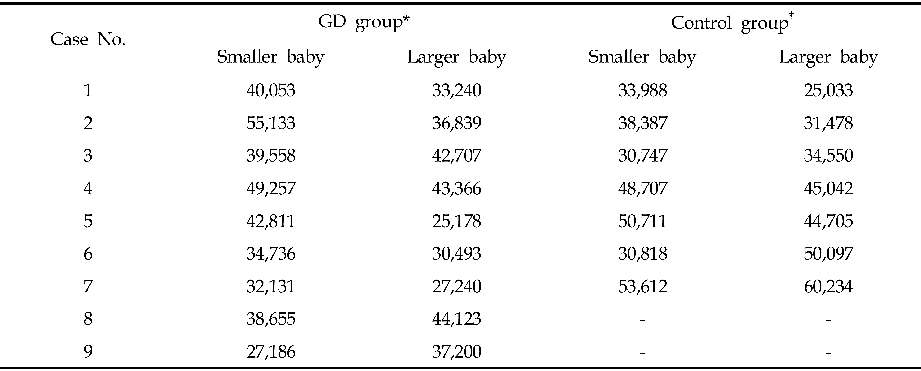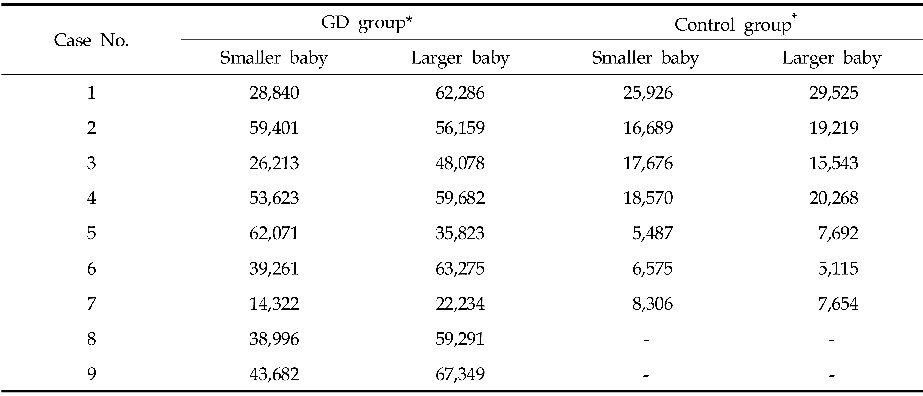Yonsei Med J.
2006 Oct;47(5):706-714. 10.3349/ymj.2006.47.5.706.
Evaluation of Short Term Clinical Effects and Presumptive Mechanism of Botulinum Toxin Type A as a Treatment Modality of Benign Prostatic Hyperplasia
- Affiliations
-
- 1Department of Urology, Bundang CHA Hospital, Pochon CHA University College of Medicine, Seongnam, Korea. dsparkmd@cha.ac.kr
- KMID: 1381252
- DOI: http://doi.org/10.3349/ymj.2006.47.5.706
Abstract
- The purpose of this study was to evaluate the effect and investigate the putative mechanism of botulinum toxin type A (BTA) applied to the treatment of benign prostatic hyperplasia (BPH). A total of 52 patients with symptomatic BPH were evaluated. Transperineal intraprostatic injection under transrectal ultrasonography was carried out. BTA dissolved in 4 to 9 mL of saline was used from 100 U to 300 U, according to prostate volume. Twenty-six patients received only BTA (BT group), and 26 received both BTA and one month of an alpha-adrenergic antagonist (BTalpha group). The therapeutic outcomes were evaluated by comparing parameters such as international prostate symptom score (IPSS), quality of life, prostate specific antigen, prostate volume, post-void residual urine, and peak urinary flow rate. At the one month follow- up, 18 patients in the BT group and 21 in the BTalpha group had subjective symptomatic relief (p = 0.337). Only IPSS5 (weak stream) was significantly different between the BT group and BTalpha groups (p = 0.034). At the three month follow-up, 39 patients had subjective symptomatic relief. The storage symptoms were improved more than the voiding symptoms. Additionally, about 50 percent of the patients whose voiding symptom improved expressed improved erectile function. BTA injection seems to be an alternative treatment for BPH. The differences after the one month evaluation between the BT and the BTalpha groups might suggest that the adrenergic influence could be relatively reinforced by the anticholinergic effect of BTA. Nitric oxide would thus be involved in a BTA action mechanism in BPH.
MeSH Terms
-
Sulfonamides/adverse effects/therapeutic use
Prostatic Hyperplasia/*drug therapy
Neuromuscular Agents/*therapeutic use
Middle Aged
Male
Humans
Drug Therapy, Combination
Doxazosin/adverse effects/therapeutic use
Botulinum Toxin Type A/adverse effects/*therapeutic use
Aged, 80 and over
Aged
Adrenergic alpha-Antagonists/adverse effects/therapeutic use
Figure
Cited by 1 articles
-
The Evolution of KTP Laser Vaporization of the Prostate
Petros Sountoulides, Peter Tsakiris
Yonsei Med J. 2008;49(2):189-199. doi: 10.3349/ymj.2008.49.2.189.
Reference
-
1. Caine M. The present role of alpha-adrenergic blockers in the treatment of benign prostatic hypertrophy. J Urol. 1986. 136:1–4.2. Lu-Yao GL, Barry MJ, Chang CH, Wasson JH, Wennberg JE. Transurethral resection of the prostate among Medicare beneficiaries in the United States: time trends and outcomes. Prostate Patient Outcomes Research Team (PORT). Urology. 1994. 44:692–699.3. McConnell JD, Bruskewitz R, Walsh P, Andriloe G, Lieber M, Holtgrewe HL, et al. The effect of finasteride on the risk of acute urinary retention and the need for surgical treatment among men with benign prostatic hyperplasia. Finasteride Long-Term Efficacy and Safety Study Group. N Engl J Med. 1998. 338:557–563.4. Lepor H, Williford WO, Barry MJ, Brawer MK, Dixon CM, Gormley G, et al. The efficacy of terazosin, finasteride, or both in benign prostatic hyperplasia. Veterans Affairs Cooperative Studies Benign Prostatic Hyperplasia Study Group. N Engl J Med. 1996. 335:533–539.5. Doggweiler R, Zermann DH, Ishigooka M, Schmidt RA. Botox-induced prostatic involution. Prostate. 1998. 37:44–50.6. Maria G, Brisinda G, Civello IM, Bentivoglio AR, Sganga G, Albanese A. Relief by botulinum toxin of voiding dysfunction due to benign prostatic hyperplasia: results of a randomized, placebo-controlled study. Urology. 2003. 62:259–265.7. Dail WG. Maggi CA, editor. Autonomic innervation of male reproductive genitalia. Nervous Control of the Urogenital System. 1993. Switzerland: Harwood Academic Publishers;69–101.8. Pennefather JN, Lau WA, Mitchelson F, Ventura S. The autonomic and sensory innervation of the smooth muscle of the prostate gland: a review of pharmacological and histological studies. J Auton Pharmacol. 2000. 20:193–206.9. Bartsch G, Frick J, Ruegg I, Bucher M, Holliger O, Oberholzer M, et al. Electron microscopic stereological analysis of the normal human prostate and of benign prostatic hyperplasia. J Urol. 1979. 122:481–486.10. Lepor H. Role of long-acting selective alpha-1 blockers in the treatment of benign prostatic hyperplasia. Urol Clin North Am. 1990. 17:651–659.11. Ventura S, Pennefather J, Mitchelson F. Cholinergic innervation and function in the prostate gland. Pharmacol Ther. 2002. 94:93–112.12. Lange W, Unger J. Peptidergic innervation within the prostate gland and seminal vesicle. Urol Res. 1990. 18:337–340.13. Kester RR, Mooppan UM, Gousse AE, Alver JE, Gintautas J, Gulmi FA, et al. Pharmacological characterization of isolated human prostate. J Urol. 2003. 170:1032–1038.14. Takeda M, Tang R, Shapiro E, Burnett AL, Lepor H. Effects of nitric oxide on human and canine prostates. Urology. 1995. 45:440–446.15. Hedlund H, Andersson KE, Larsson B. Alpha-adrenoceptors and muscarinic receptors in the isolated human prostate. J Urol. 1985. 134:1291–1298.16. Bloch W, Klotz T, Loch C, Schmidt G, Engelmann U, Addicks K. Distribution of nitric oxide synthase implies a regulation of circulation, smooth muscle tone, and secretory function in the human prostate by nitric oxide. Prostate. 1997. 33:1–8.17. Addicks K, Bloch W, Feelisch M. Nitric oxide modulates sympathetic neurotransmission at the prejunctional level. Microsc Res Tech. 1994. 29:161–168.18. Coffield JA, Considine RV, Simpson LL. Jankovic J, Hallet M, editors. The site and mechanism of action of Botulinum neurotoxin. Therapy with Botulinum Toxin. 1994. New York: Marcel Dekker;3–13.19. Klotz T, Mathers MJ, Bloch W, Nayal W, Engelmann U. Nitric oxide based influence of nitrates on micturition in patients with benign prostatic hyperplasia. Int Urol Nephrol. 1999. 31:335–341.20. Hedlund P, Ekstrom P, Larsson B, Alm P, Andersson KE. Heme oxygenase and NO-synthase in the human prostate-relation to adrenergic, cholinergic and peptidecontaining nerves. J Auton Nerv Syst. 1997. 63:115–126.21. Hedlund P, Ny L, Alm P, Andersson KE. Cholinergic nerves in human corpus cavernosum and spongiosum contain nitric oxide synthase and heme oxygenase. J Urol. 2000. 164:868–875.
- Full Text Links
- Actions
-
Cited
- CITED
-
- Close
- Share
- Similar articles
-
- The Initial Experience of Intraprostatic Injection of Botulinum Toxin Type A for Benign Prostatic Hyperplasia: A Comparative Study of Short-term Effect with Transurethral Resection of Prostate
- Clinical application of intravesical botulinum toxin type A for overactive bladder and interstitial cystitis
- A clinical study on the use of botulinum toxin type a in maxillofacial area
- Botulinum Toxin-Type A in Cervical Myofascial Pain Syndrome: A report of 3 cases
- The Effects of Botulinum Toxin (BTXA(R)) Dermal Injections on Facial Wrinkle Lines




